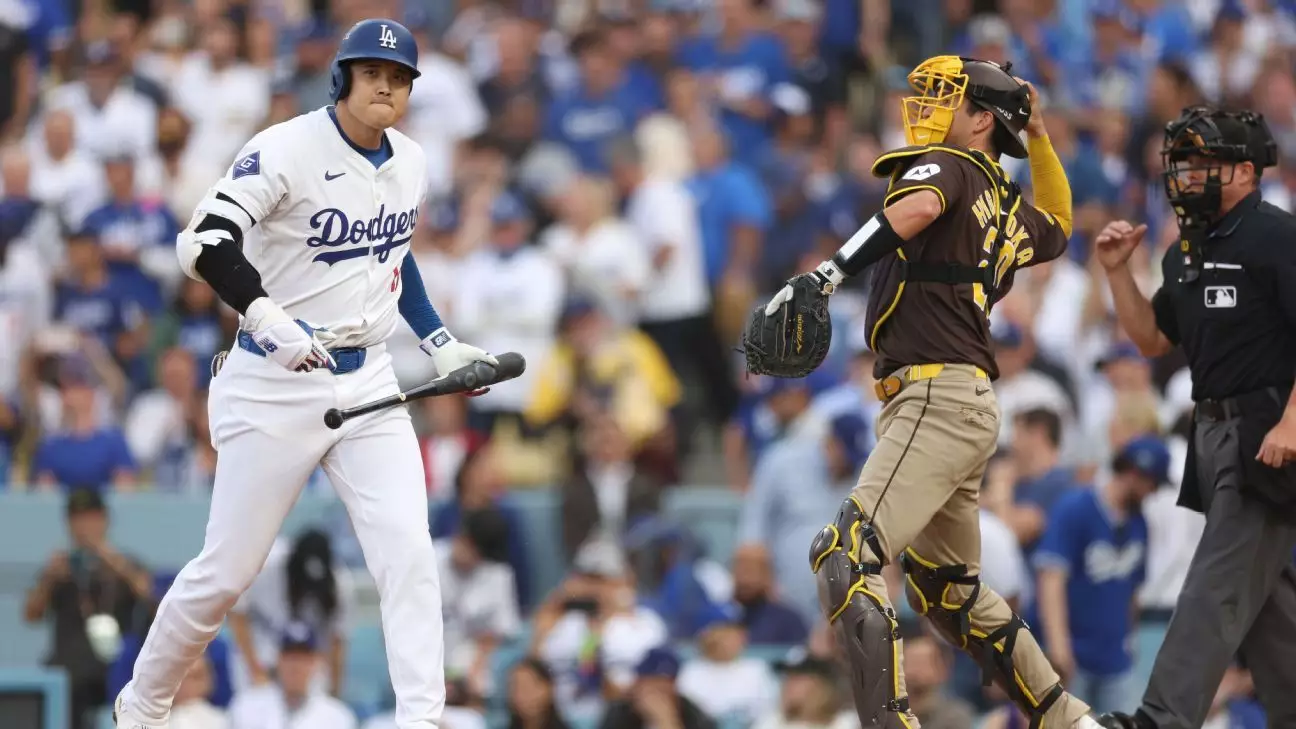In the high-stakes environment of postseason baseball, every player’s performance is scrutinized under a microscope, and few have drawn as much attention as Shohei Ohtani of the Los Angeles Dodgers. Despite a dismal 0-for-19 showing with the bases empty, Ohtani’s heroic stats with runners on base have left fans and analysts alike puzzled over his batting order placement for Game 3 of the National League Championship Series against the New York Mets. As the Dodgers‘ manager, Dave Roberts, confirmed his decision not to move Ohtani down in the lineup, the focus shifted to understanding the dynamics of his performance at such a critical juncture.
Ohtani’s playoff statistics reveal a perplexing division: he has successfully hit 6-for-8 with men on base, contrasting sharply with his inability to secure hits when the bases are empty. This dramatic disparity raises questions about approach and mindset. Interestingly, both Roberts and Ohtani are dismissive of the significance of these splits. Roberts humorously noted the transition in concern surrounding Ohtani’s hitting, suggesting that the shift from worry about his struggles with runners in scoring position to finding ways to get players on base for him indicates an unexpected twist in narrative.
From an analytical perspective, these figures invite speculation about game strategy, especially as they intersect with Ohtani’s propensity to chase pitches. Given the caliber of pitchers like Sean Manaea and Yu Darvish faced during recent games, identifying patterns in Ohtani’s approach is essential. The minor increase in his chase rate from regular season to postseason may suggest that Ohtani is reacting differently under pressure, a factor worthy of deeper exploration.
When asked about his approach at the plate, Ohtani emphasized the importance of adhering to his original game plan, irrespective of how opposing pitchers may choose to engage him. This steadfast commitment hints at a seasoned understanding of the mental aspects associated with hitting, particularly at such pivotal moments. He hinted at acknowledging the potential for bad swings during the playoffs but maintained his focus on the larger picture—consistency in fundamentals and approach.
As Ohtani himself elucidates, „If I’m feeling good and the results aren’t there, then I’m not too concerned because there’s luck involved.“ His perspective highlights a crucial element of the game: the interplay between skill and chance, demonstrating a mature grasp on the psychological landscape that players must navigate throughout their careers.
The idea of a „reset“ reigns significant in Ohtani’s reflections on his performance. He pointed out that moments of struggle can serve as opportunities for calibration, creating pathways to refine his mechanics and regain his rhythm. This insight transforms the narrative from one of merely analyzing performance to understanding the adaptive mechanisms athletes employ in response to adversity.
Roberts’ confidence that Ohtani will find his stride again soon indicates a strong faith in the player’s abilities as well as the belief that the peaks and valleys of performance are standard in sports. Highlighting Ohtani’s prior success batting leadoff—having filled that role in 90 games this season—adds an additional layer of rationale to Roberts‘ choice to keep Ohtani in his familiar position, eschewing the temptation to alter the order based on recent performance.
As Ohtani continues to navigate the intricacies of postseason play, his performance serves as a microcosm of broader themes in athletics, including resilience, adaptability, and mental fortitude. While statistics are important, they represent only one piece of a complex puzzle. The combination of his individual talents and the strategies employed by managers like Roberts forms the bedrock upon which team success is built.
In essence, the path ahead for Ohtani is one of exploration—not merely of statistics, but of the human capacity to adjust, learn, and persevere in the face of challenges. As Game 3 unfolds at Citi Field, the spotlight will not only be on what Ohtani does at the plate, but also on the continuing evolution of his approach as a player under pressure. The unfolding narrative promises to deliver insights not just into a player’s skill set, but into the resilient spirit quintessential to sportsmanship.


Napsat komentář